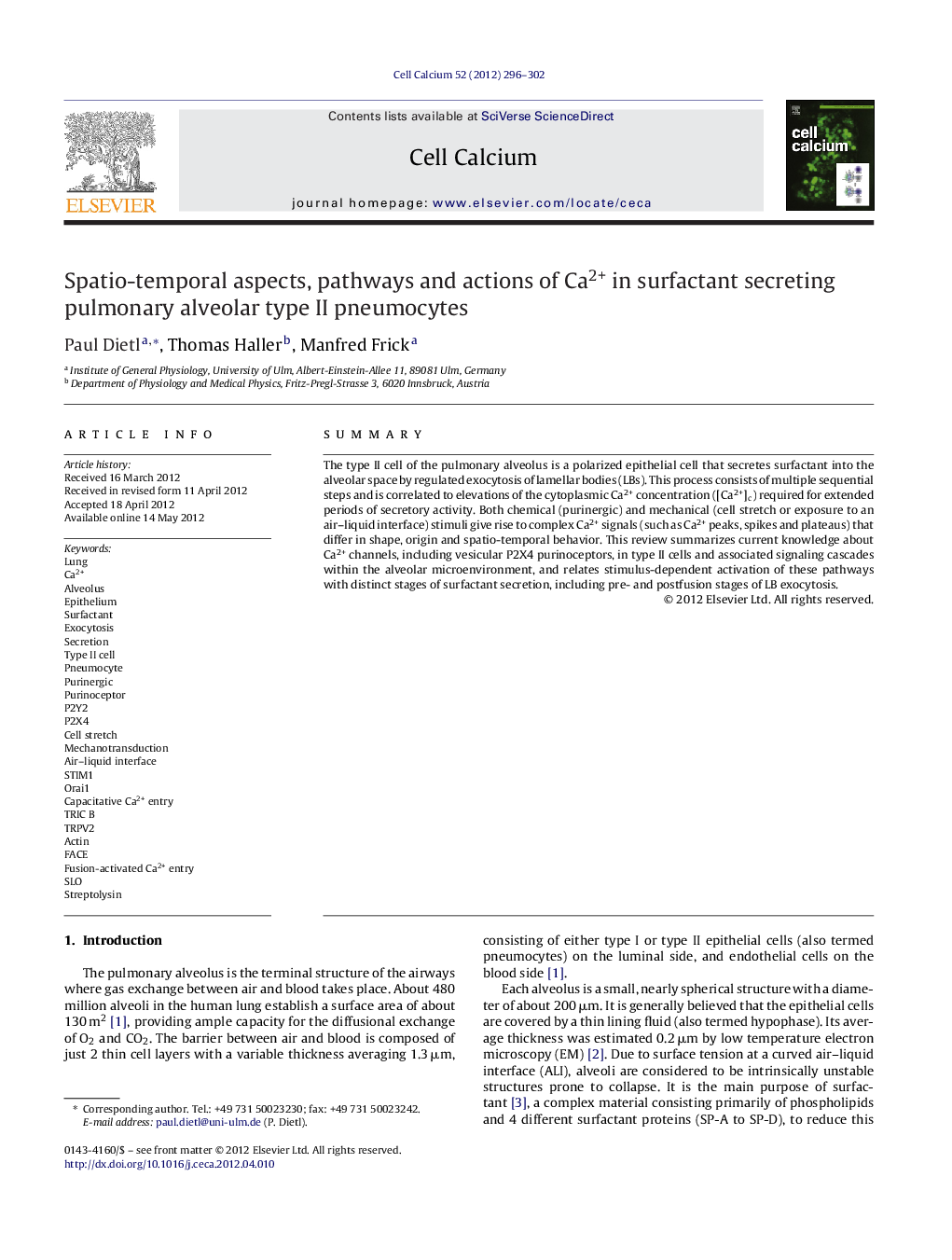| Article ID | Journal | Published Year | Pages | File Type |
|---|---|---|---|---|
| 8463447 | Cell Calcium | 2012 | 7 Pages |
Abstract
The type II cell of the pulmonary alveolus is a polarized epithelial cell that secretes surfactant into the alveolar space by regulated exocytosis of lamellar bodies (LBs). This process consists of multiple sequential steps and is correlated to elevations of the cytoplasmic Ca2+ concentration ([Ca2+]c) required for extended periods of secretory activity. Both chemical (purinergic) and mechanical (cell stretch or exposure to an air-liquid interface) stimuli give rise to complex Ca2+ signals (such as Ca2+ peaks, spikes and plateaus) that differ in shape, origin and spatio-temporal behavior. This review summarizes current knowledge about Ca2+ channels, including vesicular P2X4 purinoceptors, in type II cells and associated signaling cascades within the alveolar microenvironment, and relates stimulus-dependent activation of these pathways with distinct stages of surfactant secretion, including pre- and postfusion stages of LB exocytosis.
Keywords
Related Topics
Life Sciences
Biochemistry, Genetics and Molecular Biology
Cell Biology
Authors
Paul Dietl, Thomas Haller, Manfred Frick,
